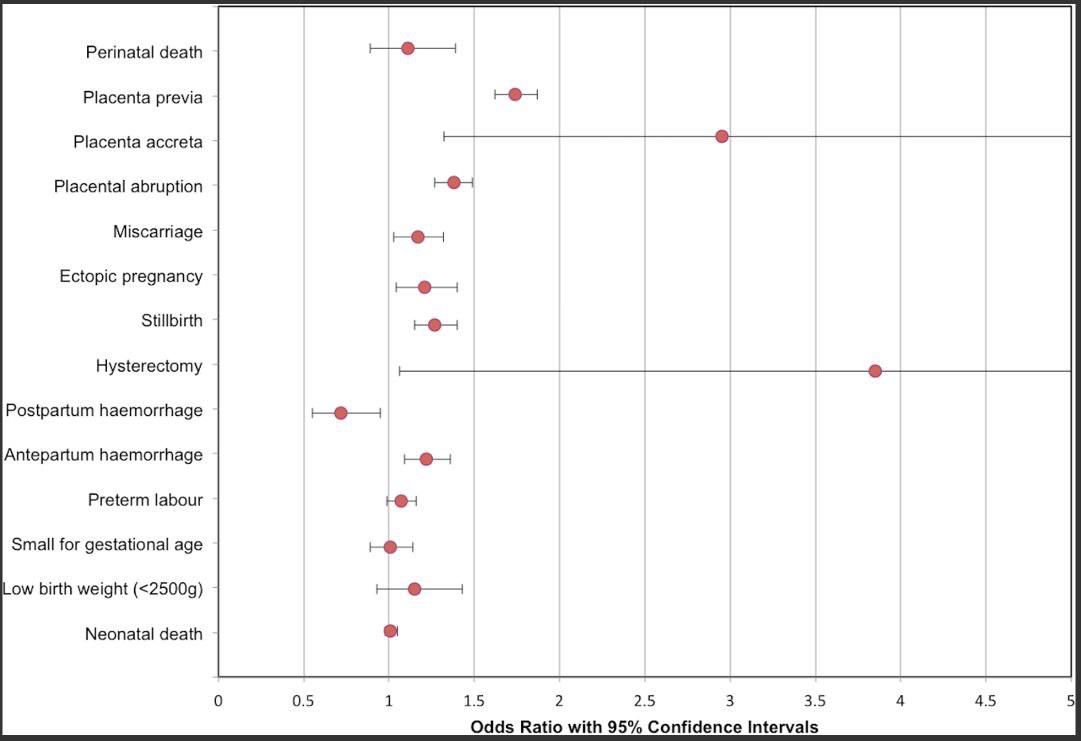Risks and Benefits of C-Sections

Figure from PLOS Medicine study.
Researchers in the United Kingdom have revealed new benefits for women undergoing Cesarean sections, reported a recent Healthline article. But despite the perceived safety of the procedure, and the benefits, experts caution that C-sections have their risks and should only be done if medically necessary.
The study in PLOS Medicine compared long-term outcomes among women who delivered vaginally and who had C-sections. In total, the researchers reviewed data from nearly 30 million women. They found that women who have had C-section deliveries have a lower risk of urinary incontinence and of pelvic prolapse, the sagging or slipping of the uterus into the vagina. C-sections also lowered the risk of birth injuries to the newborn.
But C-sections are not without risks, especially for future pregnancies, noted the article. Incidences of placenta previa, where the placenta covers the cervical opening, as well as miscarriages, increase after a C-section. There is also an increased risk for placenta abruption, where the placenta detaches from the womb, and placenta accrete where it doesn’t easily detach during delivery. The latter requires a hysterectomy. In addition, the scar tissue from a C-section increases risks in subsequent deliveries, from bleeding to bowel or bladder injuries.
If you or your newborn were injured during the birth process and you suspect negligence, you may wish to discuss the details with an experienced Philadelphia birth injury attorney we are here for you. Contact us to schedule a time to talk.

